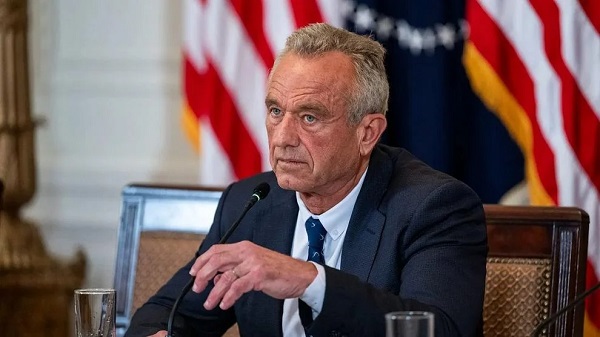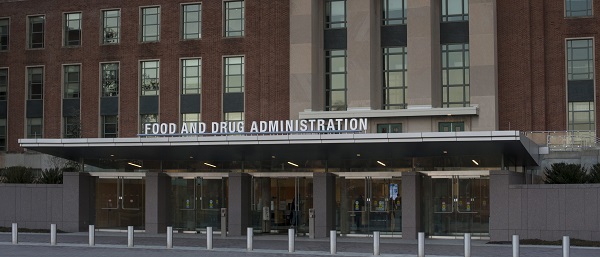Alberta
ACAC happens upon a workable provincial remedy to a world-wide conundrum

Hints, rumours and pure nonsense are being shuffled like an endless deck of cards as sports officials keep looking for a wild card that would help to clarify the road back to what once was considered a normal – or at least near-normal – state of affairs.
The same is true in the real world, of course, but this space sees more reason every day to puzzle over the wisdom of trying to save all these schedules. At this moment, painful or not, it seems that the Alberta Colleges Athletic Conference has happened upon a workable provincial remedy to a world-wide conundrum.
Earlier this week, the University of Alberta decision to wipe out at least six major sports resulted in emotional responses that reached wall to wall for sports. Now, the Alberta Colleges Athletic Conference takes another logical step by announcing a plan to conduct events almost solely in April, May and June.
Unaffected, for example, are soccer and the other events normally scheduled in the opening semester: “Their schedules (in a normal year) would be totally finished by then,” said executive director Mark Kosak.
It is considered possible that “between 12 and 16 games” of volleyball, basketball, perhaps even men’s and women’s hockey, could be played during that period. “Other tournament-style sports like curling and golf could be accommodated at the same time.” One essential commitment is to avoid conflicts between athletics and the important job of focusing on exams and other year-end functions.
Kosak confirmed that high-level school and conference officials have spoken in favour of a decision like this one.
“They respected that it would be our (athletic) decision, but it was clear that nobody wants an outbreak of any type on campus. This did not make the decision any easier. “The last thing we want to do is make it harder for our student-athletes,” he repeated. “Their disappointment and frustration has been heard.”
Certainly, some ACAC athletes will be unable to compete during the latest stage of their school year. Many must be committed to jobs away from school at that time. “We understand. Our athletes don’t want disruptions like this; neither do we.”
One other major provision, recognizing cost factors and other elements, has been introduced so institutions are free to opt out of the existing plans for a year. “The option was provided to all of our members and one school – the Camrose campus of the University of Alberta – has already accepted that option,” Kosak said.
This sort of delay might be a separate long-term benefit for the Augustana Vikings. Alumni members confirmed last month that several had been working extremely hard for enough financial and community support to delay a probable decision to wipe out men’s hockey despite the storied history of the Vikings and the once-renowned Viking Cup international tournament.
Kosak, ever the optimist, spent a few moments on an overview of these difficult times in post-secondary sports administration. He found a tiny benefit: “It is not easy to seek and find decisions like this, but it’s certainly a challenge . . . all these variables and unknowns to deal with.”
And what is sport, after all, but a challenge?
Alberta
Alberta Next Panel calls for less Ottawa—and it could pay off

From the Fraser Institute
By Tegan Hill
Last Friday, less than a week before Christmas, the Smith government quietly released the final report from its Alberta Next Panel, which assessed Alberta’s role in Canada. Among other things, the panel recommends that the federal government transfer some of its tax revenue to provincial governments so they can assume more control over the delivery of provincial services. Based on Canada’s experience in the 1990s, this plan could deliver real benefits for Albertans and all Canadians.
Federations such as Canada typically work best when governments stick to their constitutional lanes. Indeed, one of the benefits of being a federalist country is that different levels of government assume responsibility for programs they’re best suited to deliver. For example, it’s logical that the federal government handle national defence, while provincial governments are typically best positioned to understand and address the unique health-care and education needs of their citizens.
But there’s currently a mismatch between the share of taxes the provinces collect and the cost of delivering provincial responsibilities (e.g. health care, education, childcare, and social services). As such, Ottawa uses transfers—including the Canada Health Transfer (CHT)—to financially support the provinces in their areas of responsibility. But these funds come with conditions.
Consider health care. To receive CHT payments from Ottawa, provinces must abide by the Canada Health Act, which effectively prevents the provinces from experimenting with new ways of delivering and financing health care—including policies that are successful in other universal health-care countries. Given Canada’s health-care system is one of the developed world’s most expensive universal systems, yet Canadians face some of the longest wait times for physicians and worst access to medical technology (e.g. MRIs) and hospital beds, these restrictions limit badly needed innovation and hurt patients.
To give the provinces more flexibility, the Alberta Next Panel suggests the federal government shift tax points (and transfer GST) to the provinces to better align provincial revenues with provincial responsibilities while eliminating “strings” attached to such federal transfers. In other words, Ottawa would transfer a portion of its tax revenues from the federal income tax and federal sales tax to the provincial government so they have funds to experiment with what works best for their citizens, without conditions on how that money can be used.
According to the Alberta Next Panel poll, at least in Alberta, a majority of citizens support this type of provincial autonomy in delivering provincial programs—and again, it’s paid off before.
In the 1990s, amid a fiscal crisis (greater in scale, but not dissimilar to the one Ottawa faces today), the federal government reduced welfare and social assistance transfers to the provinces while simultaneously removing most of the “strings” attached to these dollars. These reforms allowed the provinces to introduce work incentives, for example, which would have previously triggered a reduction in federal transfers. The change to federal transfers sparked a wave of reforms as the provinces experimented with new ways to improve their welfare programs, and ultimately led to significant innovation that reduced welfare dependency from a high of 3.1 million in 1994 to a low of 1.6 million in 2008, while also reducing government spending on social assistance.
The Smith government’s Alberta Next Panel wants the federal government to transfer some of its tax revenues to the provinces and reduce restrictions on provincial program delivery. As Canada’s experience in the 1990s shows, this could spur real innovation that ultimately improves services for Albertans and all Canadians.
Alberta
Ottawa-Alberta agreement may produce oligopoly in the oilsands

From the Fraser Institute
By Jason Clemens and Elmira Aliakbari
The federal and Alberta governments recently jointly released the details of a memorandum of understanding (MOU), which lays the groundwork for potentially significant energy infrastructure including an oil pipeline from Alberta to the west coast that would provide access to Asia and other international markets. While an improvement on the status quo, the MOU’s ambiguity risks creating an oligopoly.
An oligopoly is basically a monopoly but with multiple firms instead of a single firm. It’s a market with limited competition where a few firms dominate the entire market, and it’s something economists and policymakers worry about because it results in higher prices, less innovation, lower investment and/or less quality. Indeed, the federal government has an entire agency charged with worrying about limits to competition.
There are a number of aspects of the MOU where it’s not sufficiently clear what Ottawa and Alberta are agreeing to, so it’s easy to envision a situation where a few large firms come to dominate the oilsands.
Consider the clear connection in the MOU between the development and progress of Pathways, which is a large-scale carbon capture project, and the development of a bitumen pipeline to the west coast. The MOU explicitly links increased production of both oil and gas (“while simultaneously reaching carbon neutrality”) with projects such as Pathways. Currently, Pathways involves five of Canada’s largest oilsands producers: Canadian Natural, Cenovus, ConocoPhillips Canada, Imperial and Suncor.
What’s not clear is whether only these firms, or perhaps companies linked with Pathways in the future, will have access to the new pipeline. Similarly, only the firms with access to the new west coast pipeline would have access to the new proposed deep-water port, allowing access to Asian markets and likely higher prices for exports. Ottawa went so far as to open the door to “appropriate adjustment(s)” to the oil tanker ban (C-48), which prevents oil tankers from docking at Canadian ports on the west coast.
One of the many challenges with an oligopoly is that it prevents new entrants and entrepreneurs from challenging the existing firms with new technologies, new approaches and new techniques. This entrepreneurial process, rooted in innovation, is at the core of our economic growth and progress over time. The MOU, though not designed to do this, could prevent such startups from challenging the existing big players because they could face a litany of restrictive anti-development regulations introduced during the Trudeau era that have not been reformed or changed since the new Carney government took office.
And this is not to criticize or blame the companies involved in Pathways. They’re acting in the interests of their customers, staff, investors and local communities by finding a way to expand their production and sales. The fault lies with governments that were not sufficiently clear in the MOU on issues such as access to the new pipeline.
And it’s also worth noting that all of this is predicated on an assumption that Alberta can achieve the many conditions included in the MOU, some of which are fairly difficult. Indeed, the nature of the MOU’s conditions has already led some to suggest that it’s window dressing for the federal government to avoid outright denying a west coast pipeline and instead shift the blame for failure to the Smith government.
Assuming Alberta can clear the MOU’s various hurdles and achieve the development of a west coast pipeline, it will certainly benefit the province and the country more broadly to diversify the export markets for one of our most important export products. However, the agreement is far from ideal and could impose much larger-than-needed costs on the economy if it leads to an oligopoly. At the very least we should be aware of these risks as we progress.

Elmira Aliakbari
-

 Alberta2 days ago
Alberta2 days agoOttawa-Alberta agreement may produce oligopoly in the oilsands
-

 Energy2 days ago
Energy2 days agoThe Top News Stories That Shaped Canadian Energy in 2025 and Will Continue to Shape Canadian Energy in 2026
-

 International2 days ago
International2 days ago$2.6 million raised for man who wrestled shotgun from Bondi Beach terrorist
-

 Energy2 days ago
Energy2 days agoWestern Canada’s supply chain for Santa Claus
-

 armed forces19 hours ago
armed forces19 hours agoRemembering Afghanistan and the sacrifices of our military families
-

 Fraser Institute19 hours ago
Fraser Institute19 hours agoHow to talk about housing at the holiday dinner table
-

 Frontier Centre for Public Policy18 hours ago
Frontier Centre for Public Policy18 hours agoTent Cities Were Rare Five Years Ago. Now They’re Everywhere
-

 Opinion19 hours ago
Opinion19 hours agoPope Leo XIV’s Christmas night homily











